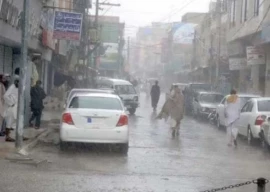
The report now calls the area the "Israeli-controlled Golan Heights."
When asked about the change on such a sensitive Middle East subject, a senior US official told reporters in Washington "there's no change in our outlook or our policy vis-a-vis these territories and the need for a negotiated settlement there."
"This, by the way, is not a human rights issue, it's a legal status issue," said Michael Kozak of the State Department's Bureau of Democracy, Human Rights and Labor.
Today, @StateDept published our 43rd annual report on human rights practices in nearly 200 countries and territories. The #HumanRightsReport provides guidance for #USForeignPolicy and reaffirms our commitment to #HumanRights. Read: https://t.co/jNfbHmOjSz#StandUp4HumanRights pic.twitter.com/dpyZGpflIo
— State Dept: Democracy, Human Rights, & Labor (DRL) (@StateDRL) March 13, 2019
"What we try to do is to report on the human rights situation in those territories, and so you're just trying to find the way of describing the place that you're reporting on," he said. "And 'occupied territory' has a legal meaning to it; I think what they tried to do is to shift more to just a geographic description."
And another semantic change that appeared in last year's report showed up again this year, with a section titled "Israel, Golan Heights, West Bank and Gaza," instead of its previous "Israel and the Occupied Territories" heading.
President Donald Trump, who has shown robust support for close US ally Israel, recognised Jerusalem as the country's capital in 2017, defying international consensus much to the chagrin of Palestinian leaders, who view Israeli-annexed east Jerusalem as the capital of their future state.
Israel seized much of the Golan Heights from Syria during the 1967 Six-Day War and then effectively annexed it in 1981, a move that was never recognised by the international community.



1728524080-0/Diddy-(2)1728524080-0-165x106.webp)



















COMMENTS
Comments are moderated and generally will be posted if they are on-topic and not abusive.
For more information, please see our Comments FAQ